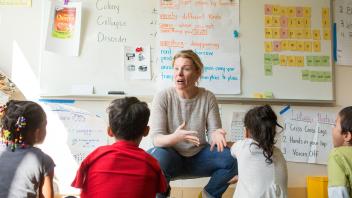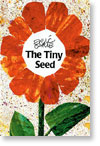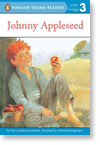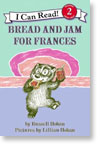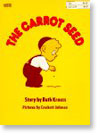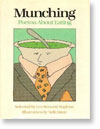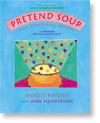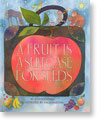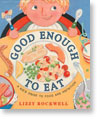The Common Core State Standards (CCSS) attempt to coordinate the education of the children in America. Families move often, therefore we need to have continuity in the teaching of reading throughout the country. The standards are interested in children doing close reads of books so they can restate the gist of a text, describe, interpret, and apply. They want them to be able to analyze, synthesize, and evaluate short challenging texts and longer texts. The standards ask teachers to expose children to quality texts with equal amounts of informational and narrative literature. The standards want children to read magazines, poetry, novels, newspapers, and new literacies. The CCSS want children exposed to information to increase vocabulary.
When we integrate literacy strategies into content areas such as social studies and science along with the more explicit instruction during language arts we can accomplish the goals discussed. This effort is not in place of small group differentiated explicit literacy instruction, but in addition to it. Teachers have used themes in the past, but not with the intention of teaching and reinforcing literacy skills. With CCSS, literacy is intentionally taught within content areas. Below are the CCSS and activities for a part of a mini-thematic unit in science on healthy food. It was written for children in the primary grades. Literacy is intentionally integrated throughout.
Content focus
The factual information children will learn in this science unit is that to remain healthy we need to eat healthy food. Healthy food supplies our bodies with nutrients and vitamins that give us energy and strength to work, play, and grow. People need to have about three servings a day of the following healthy foods:
- Vegetables include broccoli, carrots, spinach, and squash for their vitamins.
- Fruit include apples, oranges, pears, and bananas for vitamins and nutrients.
- Grains/Cereal include bread or pasta or rice and oat cereals. These have carbohydrates and fiber that give us energy.
- Meat, beans, poultry, fish, nuts, and eggs provide minerals and protein that promote growth, and build muscles.
- Milk, cheeses, and yogurt contain protein and nutrients that build bones and teeth.
Classroom supports
Prepare classroom environments with materials to enrich the Healthy Food unit. Enhance the Science Center by adding seeds, plastic foods to categorize, and journals to record progress of growing plants. Social studies materials can include cookbooks from other countries to compare food from different cultures. For the Music Center, find songs that are about food with written lyrics to read, for example, Food Glorious Food, from the Broadway musical Oliver. Include in the Art Center magazines with pictures of food, recipes, and books with famous historical food paintings.
In the Library Corner add health, fitness, and cooking magazines, pamphlets about good food, and books pertaining to the unit from all genres. The Author’s Spot contains a box of index cards to fill with recipes, blank books for writing narrative and expository text about food, and journals for new vocabulary, for charting foods eaten daily, and charting growth of plants.
Unit activities and CCSS
Following are a few activities in this mini science unit about Healthy Food. Each activity will begin with the CCSS it is accomplishing.
RL 3.2 Describe how characters in a story respond to major events and challenges.
Begin the unit by reading the book Mr. Rabbit and the Lovely Present Before reading, look at some of the pages to predict what children think the rabbit and the girl will do in the story. Read the story, and have a basket beside you. As the girl in the book selects apples, bananas, grapes, and pears for her mother’s birthday present, put this fruit in the basket. After reading, describe in sequential order the healthy present the girl and rabbit created. Ask if they created a good birthday present and why.
RI 2.4: Determine the meaning of words and phrases in text relevant to a grade two topic or subject area.
RI 2.9: Compare and contrast the most important points presented by two texts on the same topic.
Morning meeting
The teacher reads A Fruit Is a Suitcase for Seeds and at another time How a Seed Grows. Discuss and write down the new vocabulary in the books. Then choral read the Morning Message to engage students in fluency work.
Morning message
We are learning about good foods to eat to stay healthy. Fruits are good for us since they have vitamins and nutrients such as apples and bananas. I will give each of you an apple and a banana. Observe and describe the properties of these fruits as you cut them open, smell them, look at, touch, and taste them.
Write banana words on yellow postits and apple words on green post-its. Put how they are the same on blue post-its. Put your post-its on the big Venn diagram on the board so we can discuss how apples and bananas are alike and different based on what you found in the books read earlier and your findings through observation.
W2.2: Write informative, explanatory texts in which the students introduce a topic, use facts and definitions to develop points, and provide a concluding statement.
After the Morning Message activity the children are asked to write three short paragraphs. The first sentence is already on the paper and says: Apples and bananas are good for you because they have vitamins and nutrients. After that sentence instruct the children to consult the books read and do the following:
- In your first paragraph write what you learned about apples when you cut, touched, smelled, tasted, and looked at them.
- In the next paragraph write what you learned about bananas when you touched, smelled, tasted, and looked at them.
- In the third paragraph write how apples and bananas are the same.
SL 2.4: Tell a story or recount an experience with appropriate facts and relevant descriptive details, speaking audibly in coherent sentences.
RL 2.5: Describe the overall structure of story, including how the beginning introduces the story and the ending concludes the action.
Read the book The Tiny Seed and have children retell the story in sequential order and talk about the introduction of the story and the ending action.
RI 2.1: Ask and answer such questions as who, what, where, when, why, and how to demonstrate understanding of key details in a text.
Discuss a program for parents to share what was learned in the Healthy Food unit. Prepare healthy snacks, such as a fruit salad or a vegetable platter. Read Good Enough to Eat: A Kid’s Guide to Food and Nutrition and apply what is learned from the book to help prepare the food.
RF 2.4: Read with sufficient accuracy and fluency to support comprehension. A. Read on-level with purpose and understanding. B. Read on-level prose and poetry orally with accuracy appropriate rate and expression on successive readings. C. Use context to confirm or self-correct word recognition and understanding, rereading as necessary.
- The teacher reads the story The Carrot Seed. Five children repeat the phrase, “It won’t come up,” each time it appears and sign those words using American sign language at the same time.
- Three children retell the story Mr. Rabbit and the Lovely Present. They use props as the teacher did earlier, a basket, an apple, pear, grapes, and a banana and have a stuffed animal rabbit. One child is the rabbit, one is the girl, and one is the narrator.
- There are two book talks presented to persuade class to read them. One child does a book talk on Bread and Jam for Frances, and another does a talk on From Seed to Pumpkin.
- To end the program the class choral reads poems from Munching: Poems About Eating with concern for automaticity and prosody.
Resources
Narrative Literature
The Very Hungry Caterpillar by Eric Carle
The Tiny Seed by Eric Carle
Johnny Appleseed by Patricia Demuth
Bread and Jam for Frances by Russell Hoban
The Carrot Seed by Ruth Krauss
Blueberries for Sal by Robert McCloskey
Mr. Rabbit and the Lovely Present by Charlotte Zolotow
Poetry
Carrots to Cupcakes: Reading, Writing, and Reciting Poems About Food by Marla Freese
Munching: Poems About Eating by Lee Bennett Hopkins
Informational Literature
Pretend Soup and Other Real Recipes by Mollie Katzen and Ann L. Henderson
How a Seed Grows by Helene J. Jordan and Loretta Krupinski
A Fruit Is a Suitcase for Seeds by Jean Richards
From Seed to Pumpkin by Wendy Pfeffer and James Graham Hale
Good Enough to Eat: A Kid’s Guide to Food and Nutrition by Lizzy Rockwell
Technology to use during the unit
About the author
Lesley Mandel Morrow, a past President of the International Reading Association, is Professor of Literacy at Rutgers the State University of New Jersey, where she is also Co-Director of the Rutgers Center for Literacy Development, lesley.morrow@gse.
